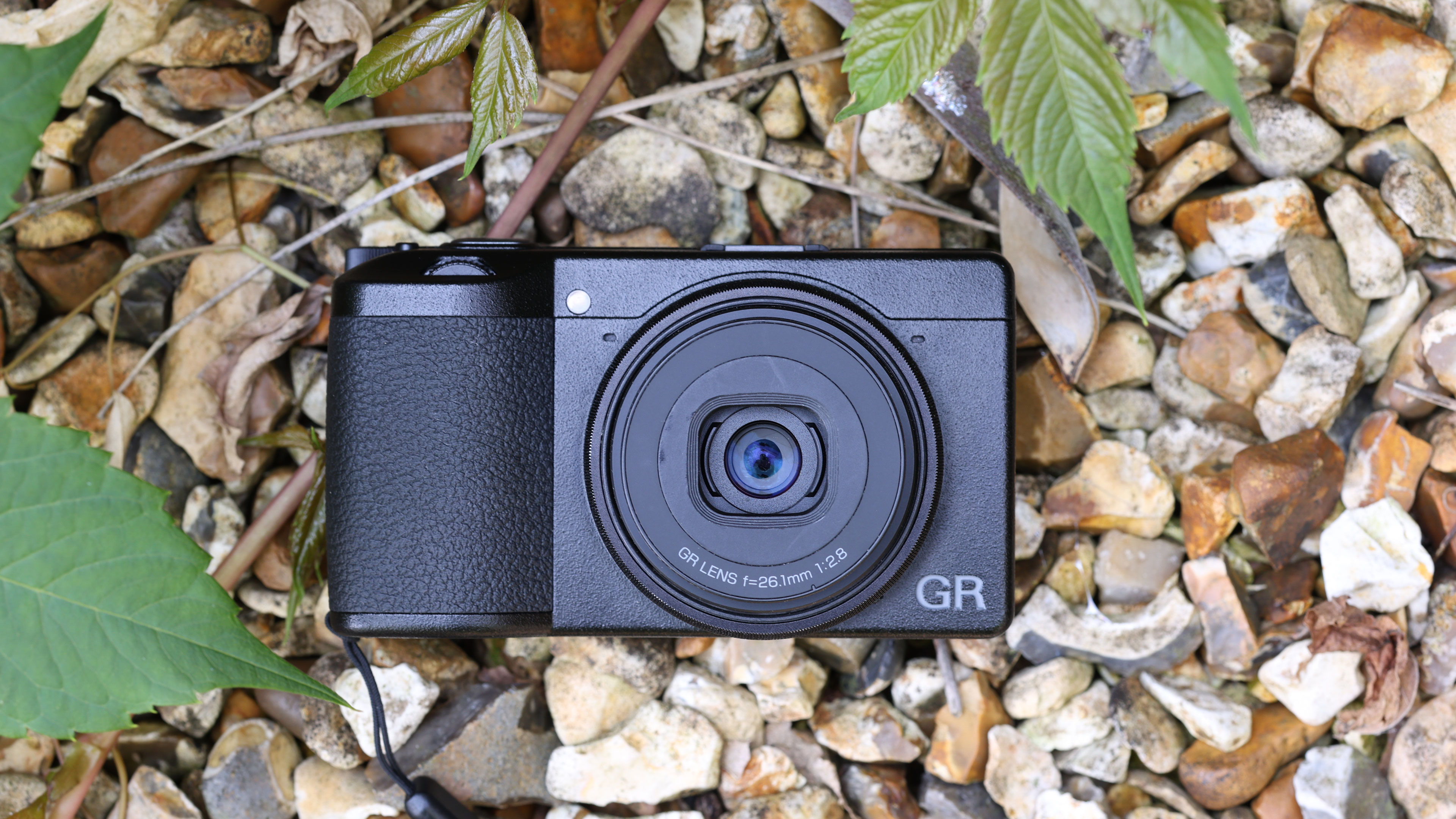
The Ricoh GR IIIx HDF is a new variant of a long-running camera design. It houses a 24MP sensor in an unfeasibly small body and comes with a choice of two lenses. The regular Ricoh GR III has a 28mm equivalent f/2.8 lens, while this new version of the Ricoh GR IIIx tested here has a 40mm equivalent f/2.8.
These lenses are fixed and non-interchangeable. You have to choose the focal length you want when you buy the camera. There is a wide-angle adaptor you can get for the 28mm model and a tele adaptor for the 40mm version, but these are pretty bulky and not cheap.
It's pretty limited, then, but the Ricoh GR IIIx is still one of the best compact cameras for its combination of size, control and an APS-C sensor. Some might say it's also one of the best cameras for street photography, or one of the best cameras for travel, depending on how highly you rate pocketability and whether you like the simplicity and discipline of a fixed focal length lens. If you're looking for the best vlogging camera, though, this isn't it. The fixed rear screen and limited video resolution – it's full HD only – rule out out.
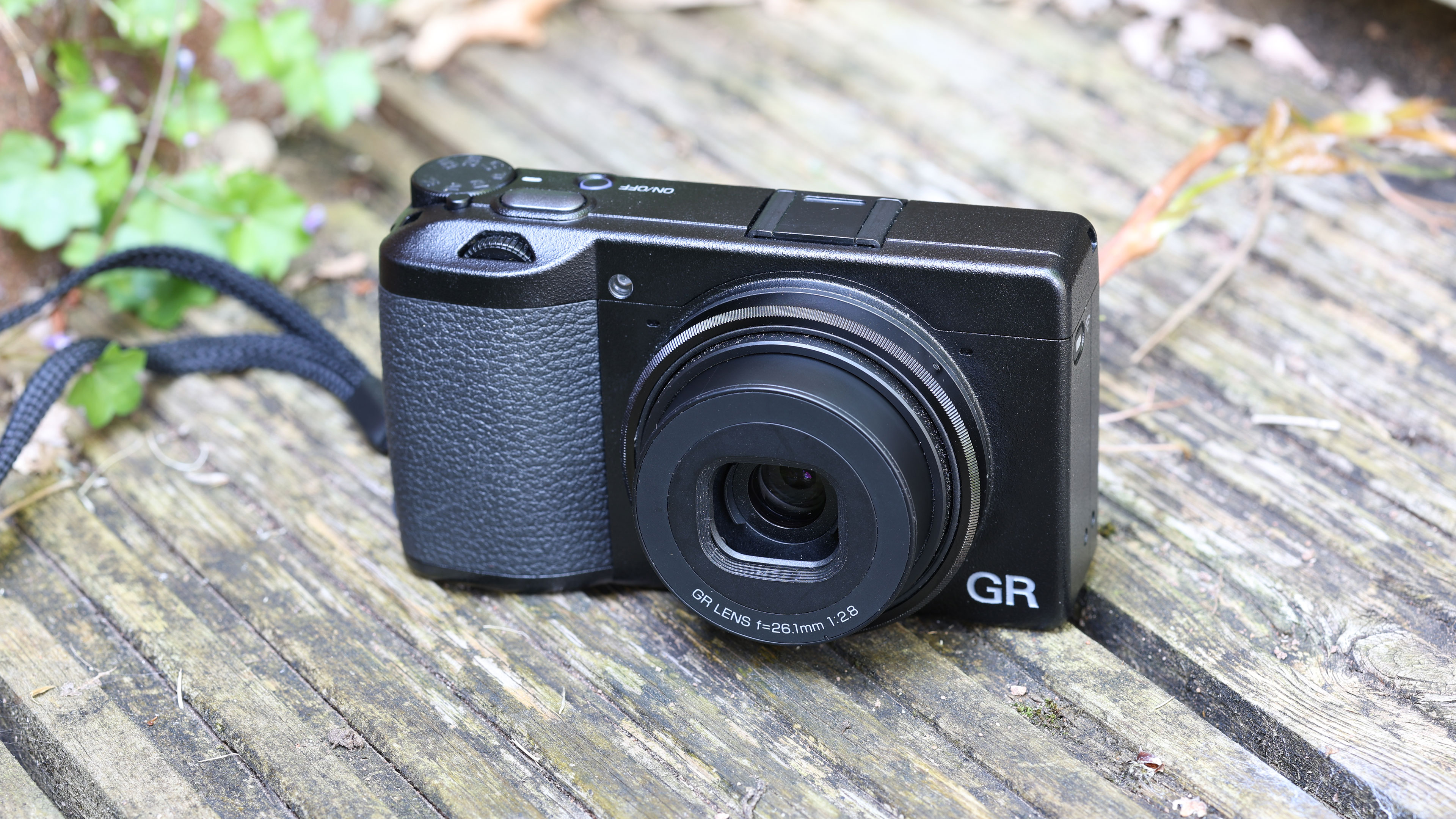
There’s no viewfinder on this camera – images must be composed and viewed on the fixed rear screen. You can get clip-on OVFs that go on the accessory shoe, but these too are quite expensive. Another compromise of the small design is a small battery with a lowly 200-shot capacity.
There are some useful and clever features, though. The GR IIIx has built in 3-axis 4-stop image stabilization, a macro mode and an ‘AA filter simulator. The sensor itself has no AA filter but just in case you do see any moiré effects in patterns or textures, the AA filter simulator can help.
The key feature of this GR IIIx HDF model is its HDF or ‘highlight diffusion filter’. This is activated instantly by a button on the back of the camera and lends a soft glow to highlights for a more ‘analog’ look. This replaces the 2-stop ND filter on the regular non-HDF version. (The ND filter is simply to help when shooting in very bright light, not for any particular creative effect like long exposures.)
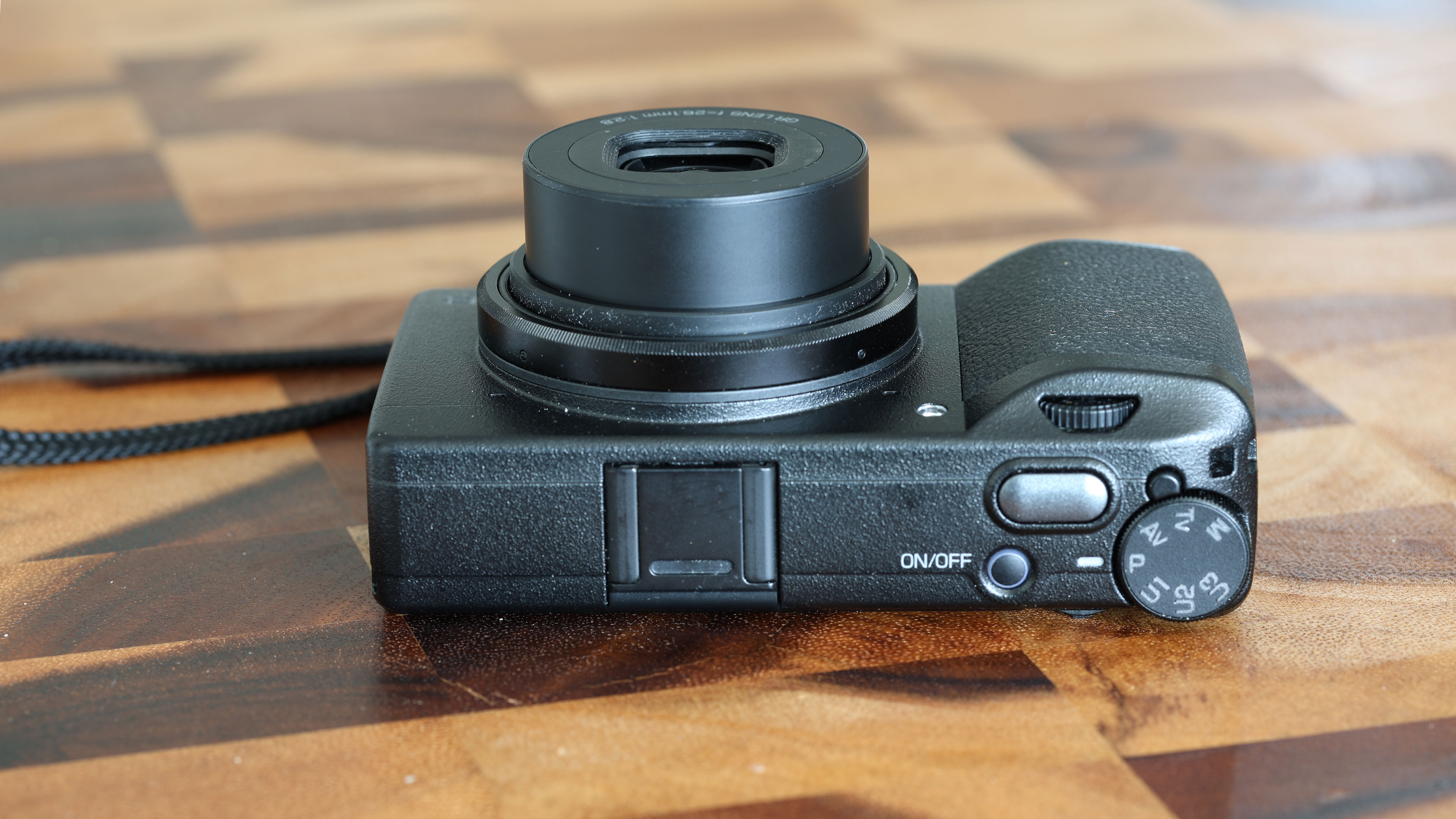
Ricoh GR IIIx HDF: Specifications
Ricoh GR IIIx HDF: Price and availability
The Ricoh GR IIIx HDF is available now and costs $1,146 / £1,099 / AU$1,899. This makes it a cheaper alternative to the wildly popular Fujifilm X100 VI, but more expensive than several decent APS-C mirrorless cameras. There is also a regular GR IIIx version which offers a switchable ND filter rather than the HDF filter in this camera, and if you prefer a wider 28mm equivalent angle of view there’s the regular GR III, which also has an HDF variant and is typically slightly cheaper.
Ricoh GR IIIx HDF: Design and handling
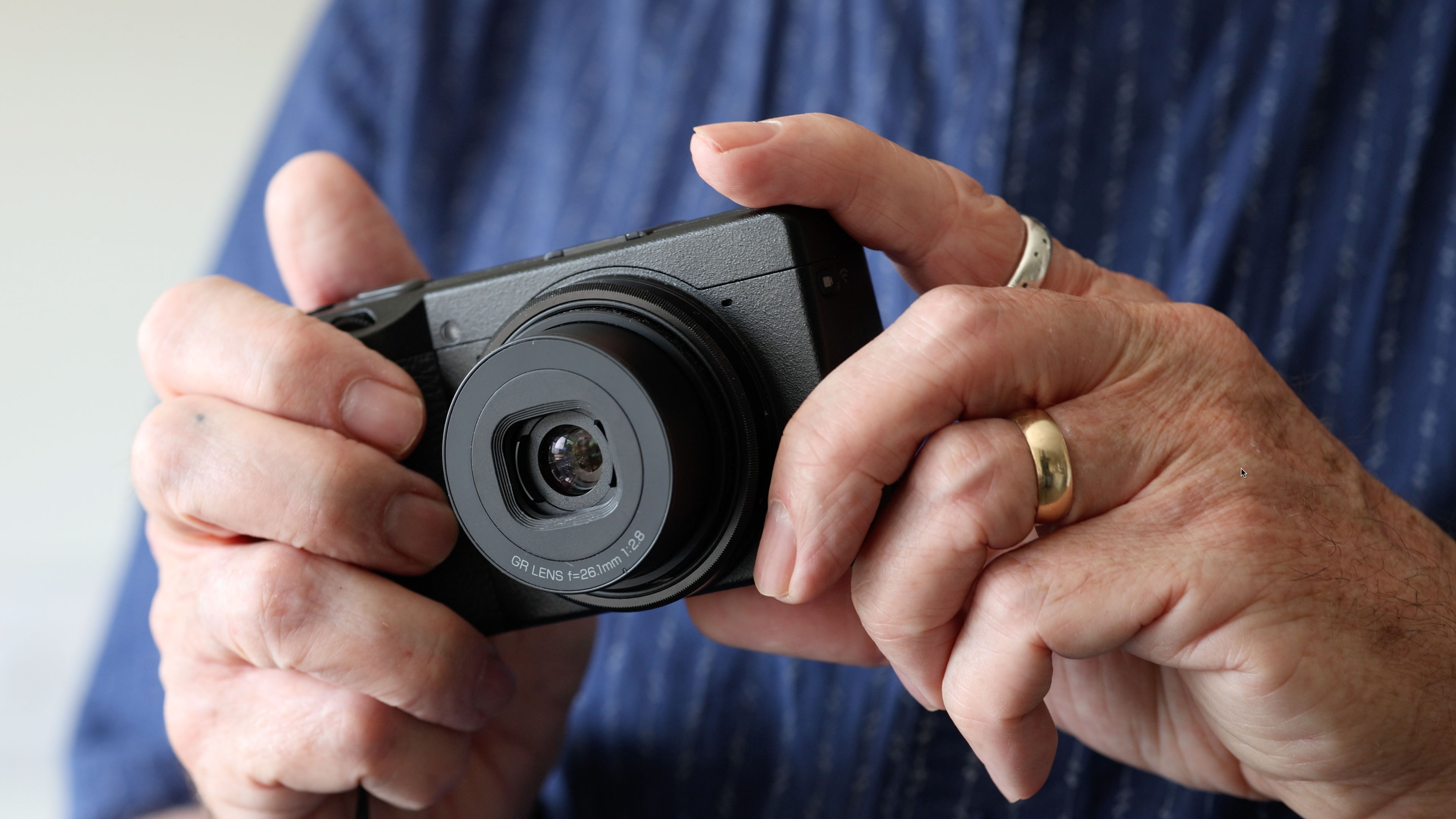
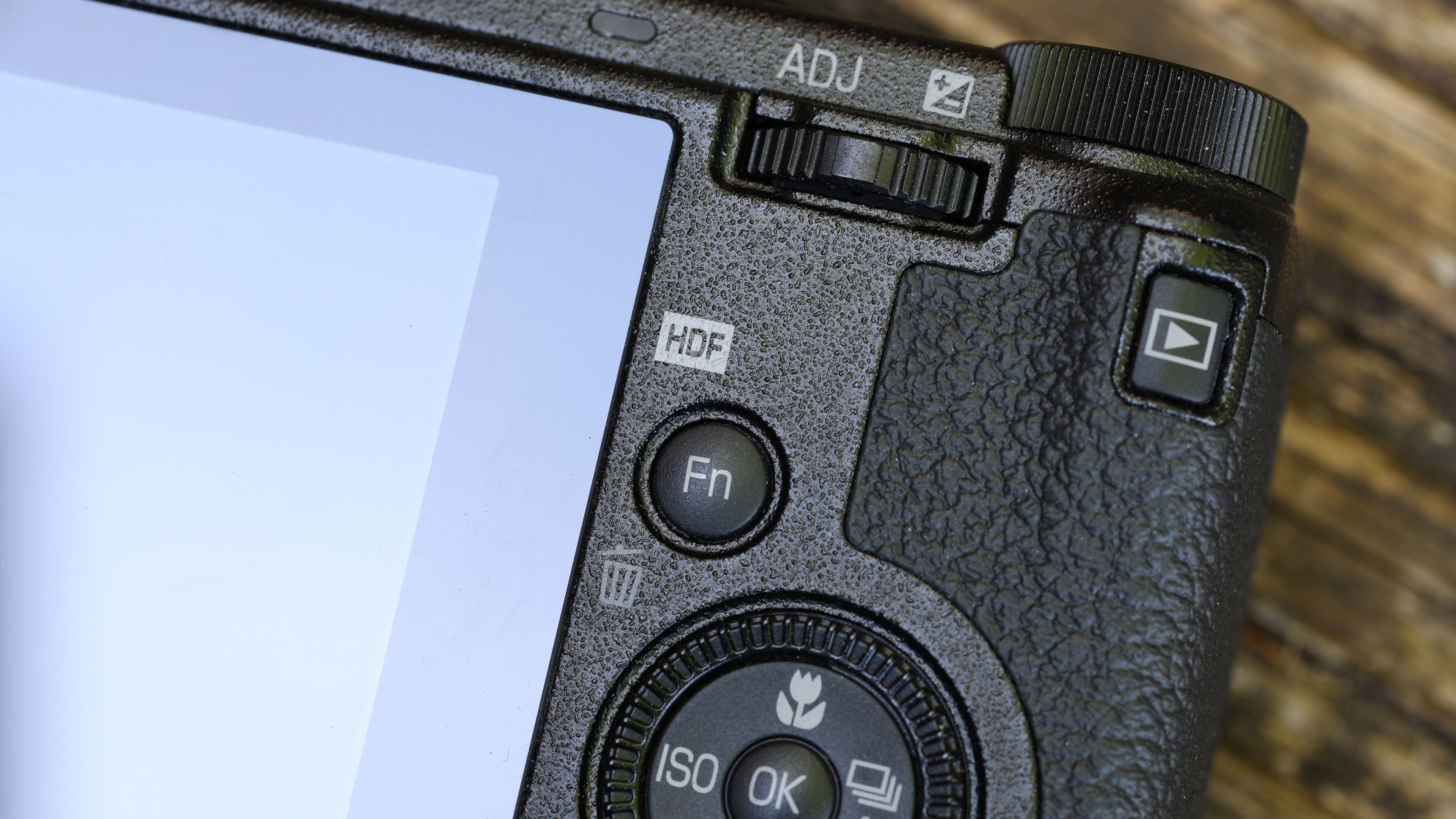
The Ricoh GR IIIx HDF really is remarkably small. You can carry it around in a trouser or jacket pocket where no other camera would fit, and you still get the high-end image quality of an APS-C sensor. It’s a pretty remarkable achievement in that respect.
Also remarkable is the way Ricoh has managed to make its controls so effective in the limited space available. It has two control dials, the rear ‘Adj’ dial with a click action so that you can choose the setting you want to adjust and a sprung left/right lever action for making changes.
In fact, there’s a third control dial if you count the rear dial around the four-way controller, and this can be used for menu navigation or manual focusing, for example.
But this camera’s size does affect its handling. There’s what appears to be a grip on the right hand side, but if you curl your fingers around it, your fingernails are scraping the lens barrel. You don’t get an EVF, which perhaps is understandable in a camera this small, but you don’t get an articulated screen either – it doesn’t even tilt. This makes it pretty difficult to compose shots at low angles – and you’ll almost certainly need to increase the brightness for outdoor use, which you can do in the menus.
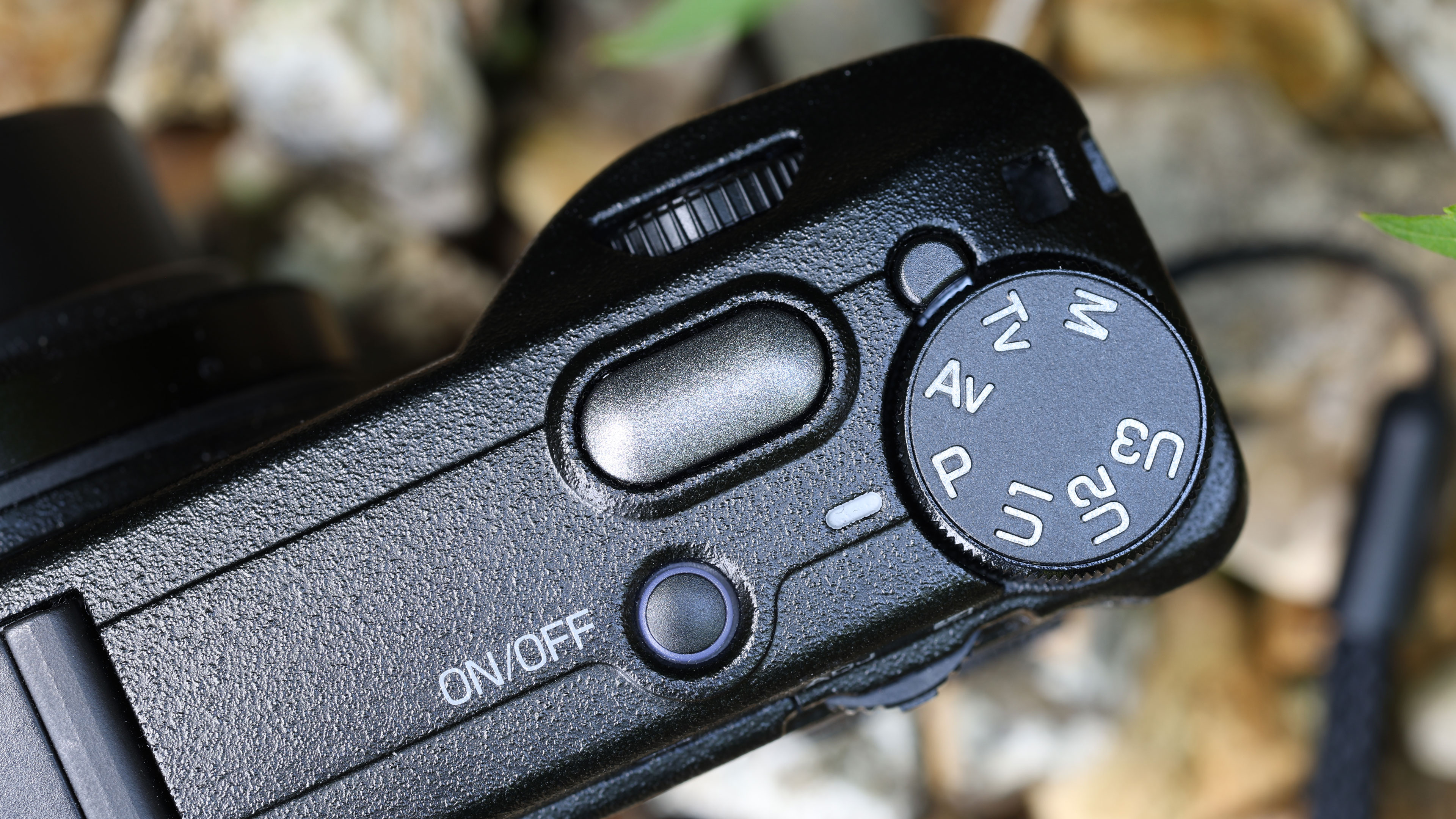
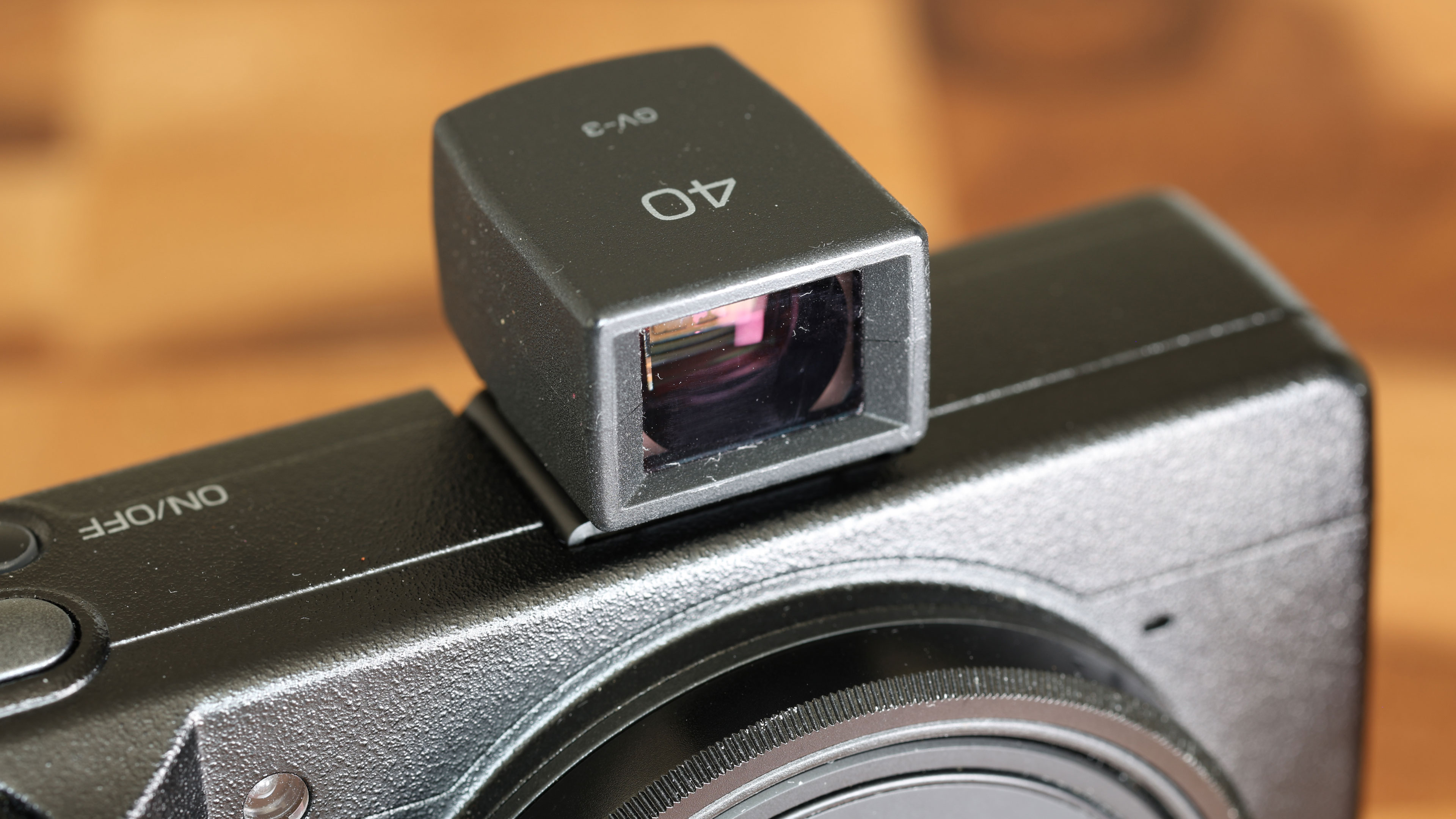
There’s a locking button above the mode dial so that you don’t accidentally change it while handling the camera, and the shutter release offers a ‘snap focus’ mode which defaults to a fixed focus distance if you press the shutter quickly in a single action; otherwise, you can half-press to autofocus normally.
It’s a small camera so, not surprisingly, it has a small battery. Ricoh says the DB-110 cell is good for around 200 shots, which might be fine for casual snapping, but you might need to take a spare for longer sessions. You can charge the GR IIIx HDF via USB, though, so you could top it up with a portable power bank.
The accessories are worth a mention, for good reasons and bad. The regular 28mm equivalent GR III can take an optional 0.75x GW-4 adaptor for a wider angle of view, while for GR IIIx there’s a 1.5x GT-2 tele adaptor that takes its effective focal length from 40mm to 60mm – or further if you use one of the camera’s crop modes. These adaptors look reasonably priced at around $225 / £225, but then you do have to buy an adaptor on top of that at around $40-$50 / £40-50. The combination of the converter and adaptor is as large as a comparable APS-C prime, so you’re certainly not dealing with a pocket-sized camera any more.
Our sample GR IIIx was supplied with an optional GV-3 optical viewfinder which clips into the camera’s hotshoe. This is a ‘dumb’ optic which does not transmit or display any kind of camera information but still costs a jaw-dropping $250 / $299.
Ricoh GR IIIx HDF: Performance
In terms of image quality, there’s little to complain about. The 40mm equivalent f/2.8 lens delivers consistent edge-to-edge sharpness, though the camera does employ some in-camera corner shading correction, so if you’re shooting raw files you’ll need software with a matching correction profile, or you can do it manually.
The image quality at higher ISOs is good too. Unlike a lot of cameras, the GR IIIx HDF doesn’t attempt to smudge noise out of existence and maintains a good balance between noise and detail right up to around ISO 6400, where magenta mottling is starting to appear in darker areas. You can go all the way up to ISO 102,400 if you want to, but it all depends on how much image quality you’re prepared to sacrifice, and by ISO 102,400 it’s a bit of a mess.
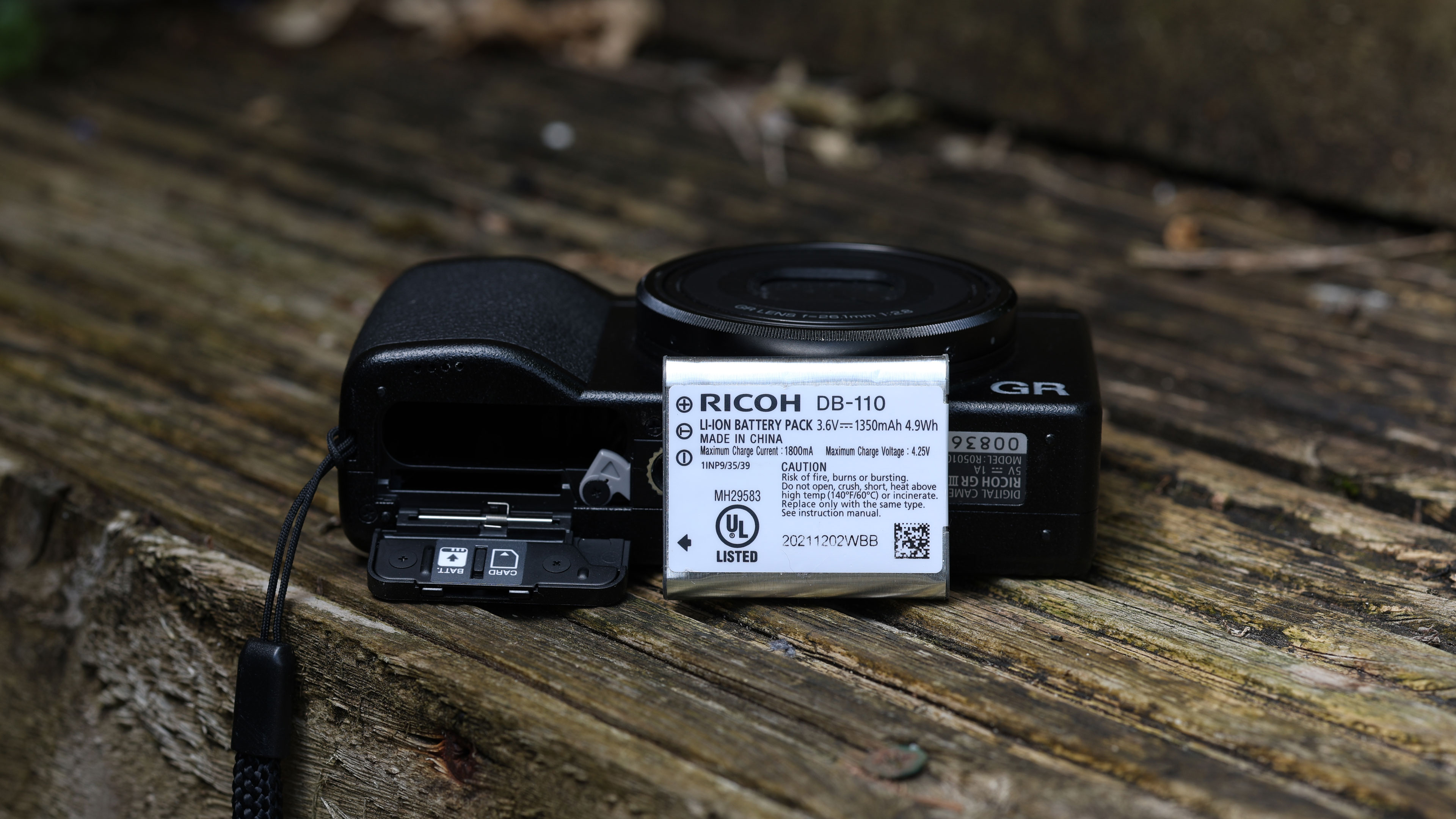
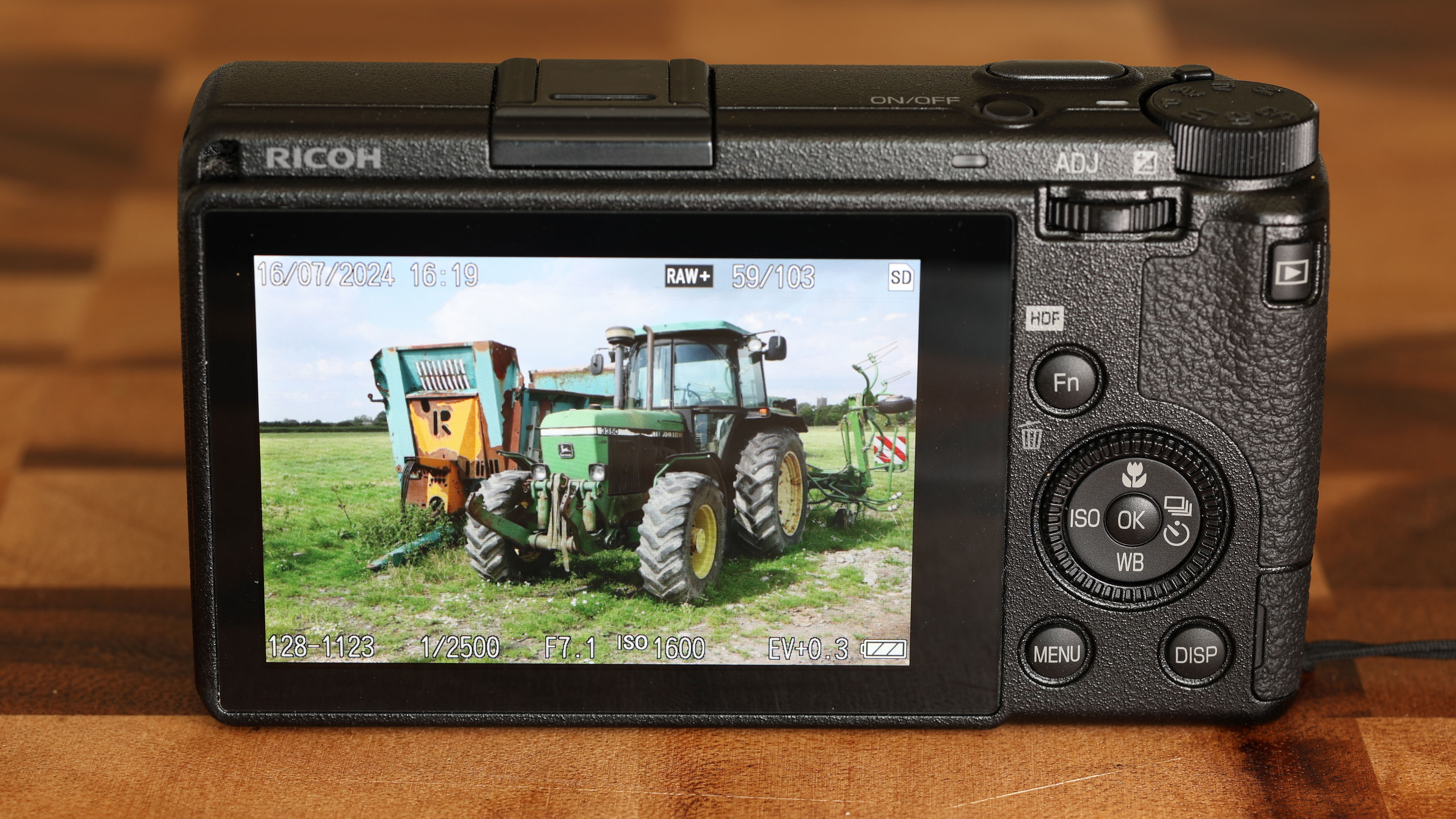
The autofocus is good without being great. There’s a good choice of AF modes, including pinpoint focus, for when you want to use a wide aperture for differential focus effects, though the AF speed itself is very average by today’s standards. The snap focus is much faster but you need to be able to judge the fixed focus distance you want to set it to.
The burst mode is distinctly lackluster. Ricoh doesn’t quote an official burst speed, but it feels like about 4-5fps, and if you’re shooting raw the buffer fills up very quickly, so this is not a camera for fast bursts.
The GR IIIx is snappy enough (no pun intended) for the kind of street / travel photography it’s become known for, but many of its rivals are just as responsive or better. The HDF filter is interesting but, frankly, it’s so subtle its value is questionable and you will often have to check the image data on the back of the camera to remind yourself if you used it or not.
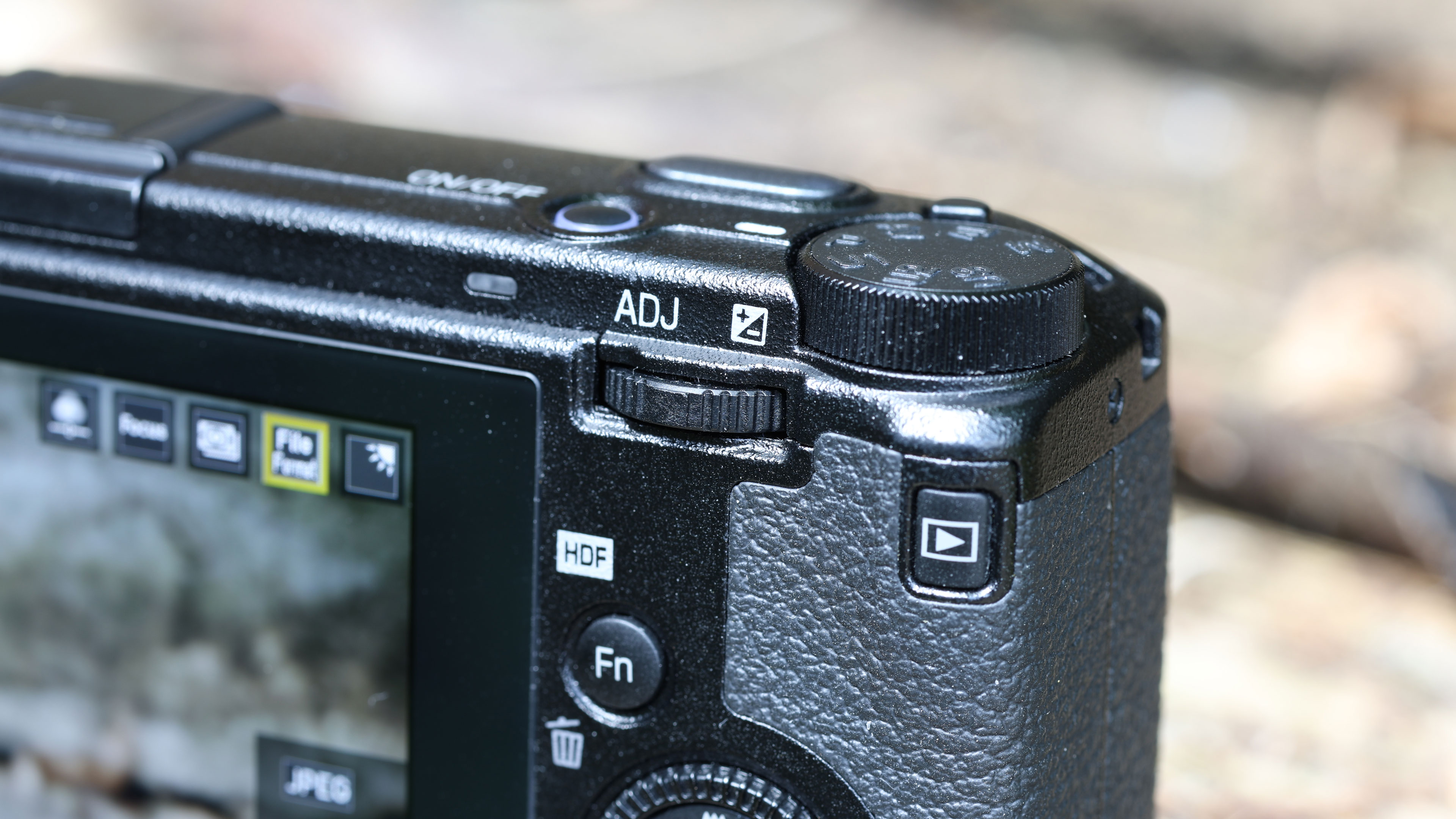
Ricoh GR IIIx HDF: Lab results
For our lab data comparison, we pitched the GR IIIx HDF against similarly compact cameras with relatively large image sensors: the Fujifilm X100VI, Leica D-Lux 8 and the Olympus PEN E-P7.
Resolution (line widths/picture height):
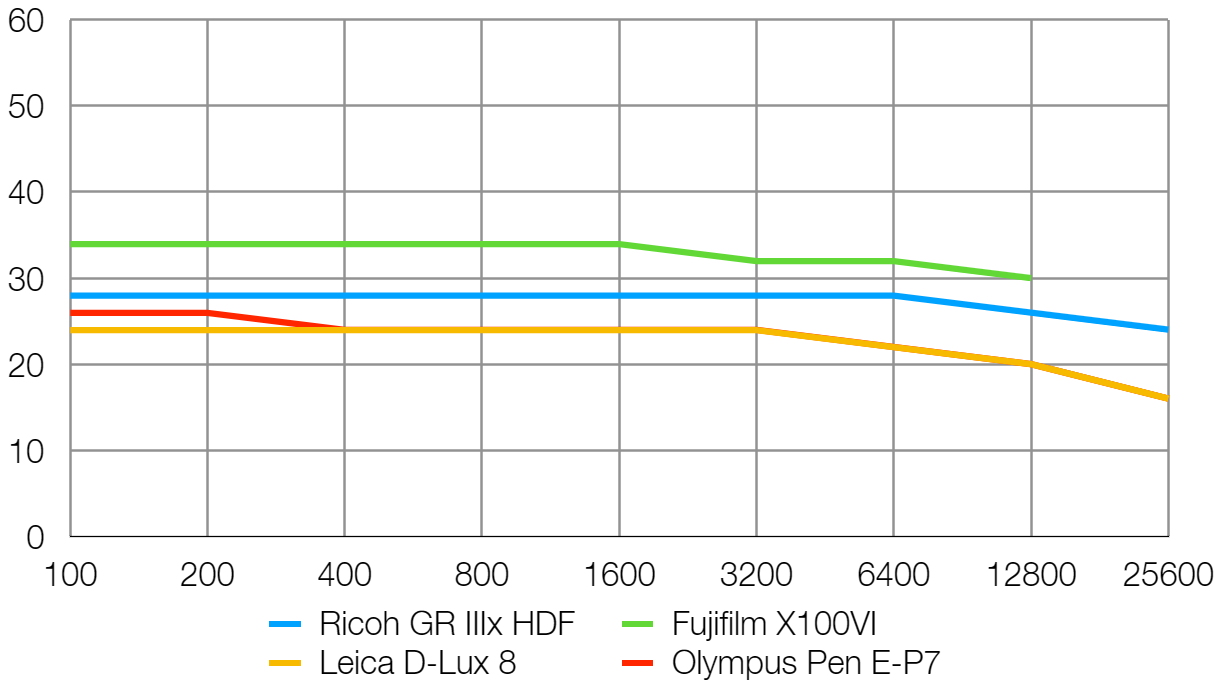
Resolution is measured using standardized text charts which give results in line widths / picture height, which is independent of sensor size.
The GR IIIx scores well for a 24MP APS-C camera, but ultimately the 40MP X100VI was always going to come out on top for resolving fine detail.
Dynamic range (EV):
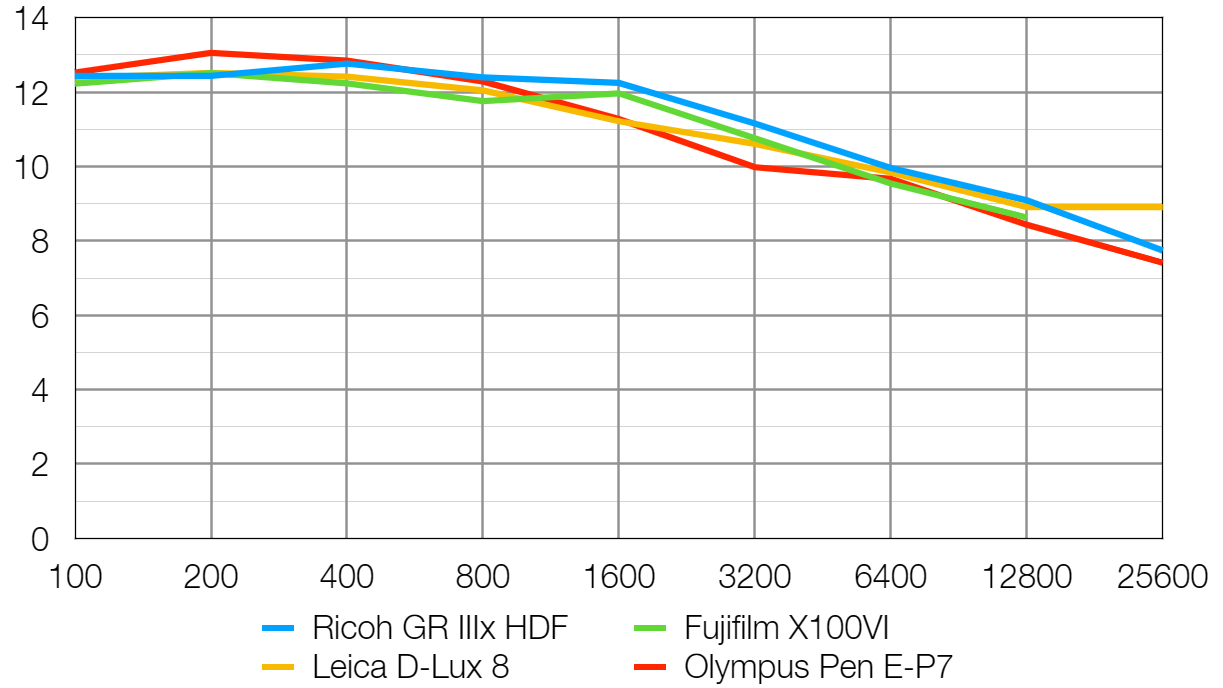
Dynamic range is a measure of a camera's ability to record extreme brightness ranges and still retain detail in the brightest and darkest parts of the scene. It's measured in EV (exposure values, or 'stops').
Though the GR IIIx doesn't quite lead the pack at low ISOs, it captures excellent dynamic range as sensitivities increase.
Signal to noise ratio (decibels):
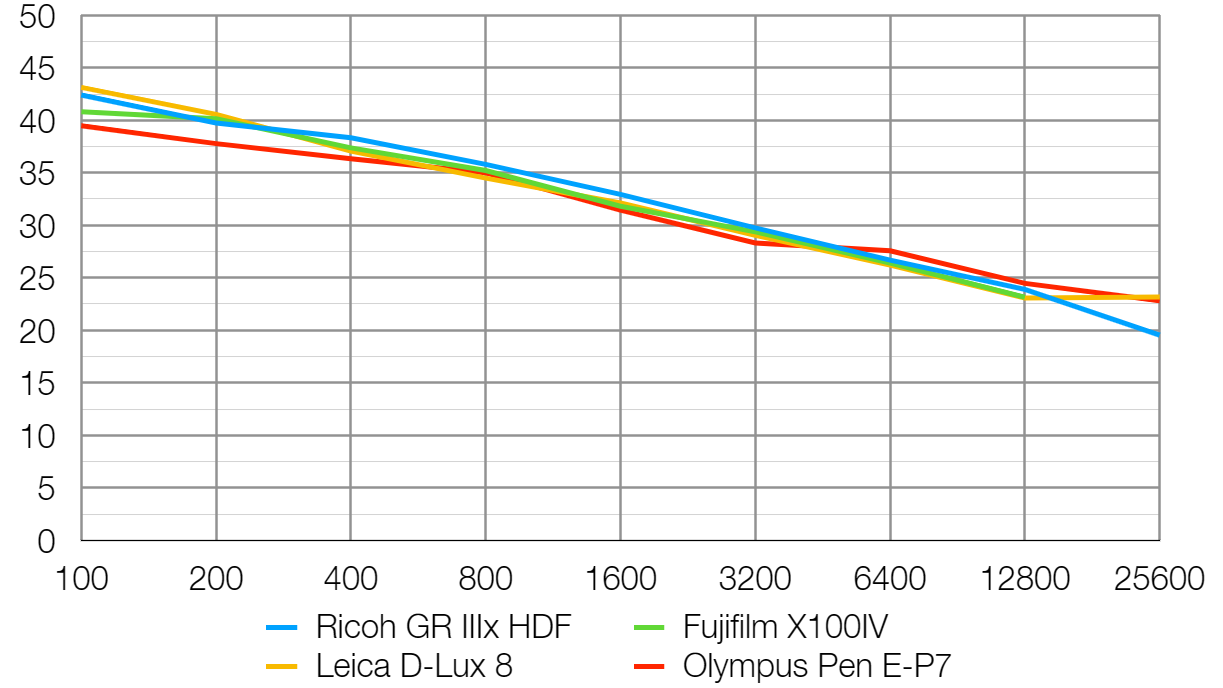
This test compares the amount of random noise generated by the camera at different ISO settings as a proportion of the actual image information (the 'signal'). Higher values are better and we expect to see the signal to ratio fall as the ISO is increased.
All four cameras are closely matched here, but the GR IIIx just comes out on top when you average the results across the whole tested ISO range - it does a good job of controlling image noise.
Ricoh GR IIIx HDF: Sample images
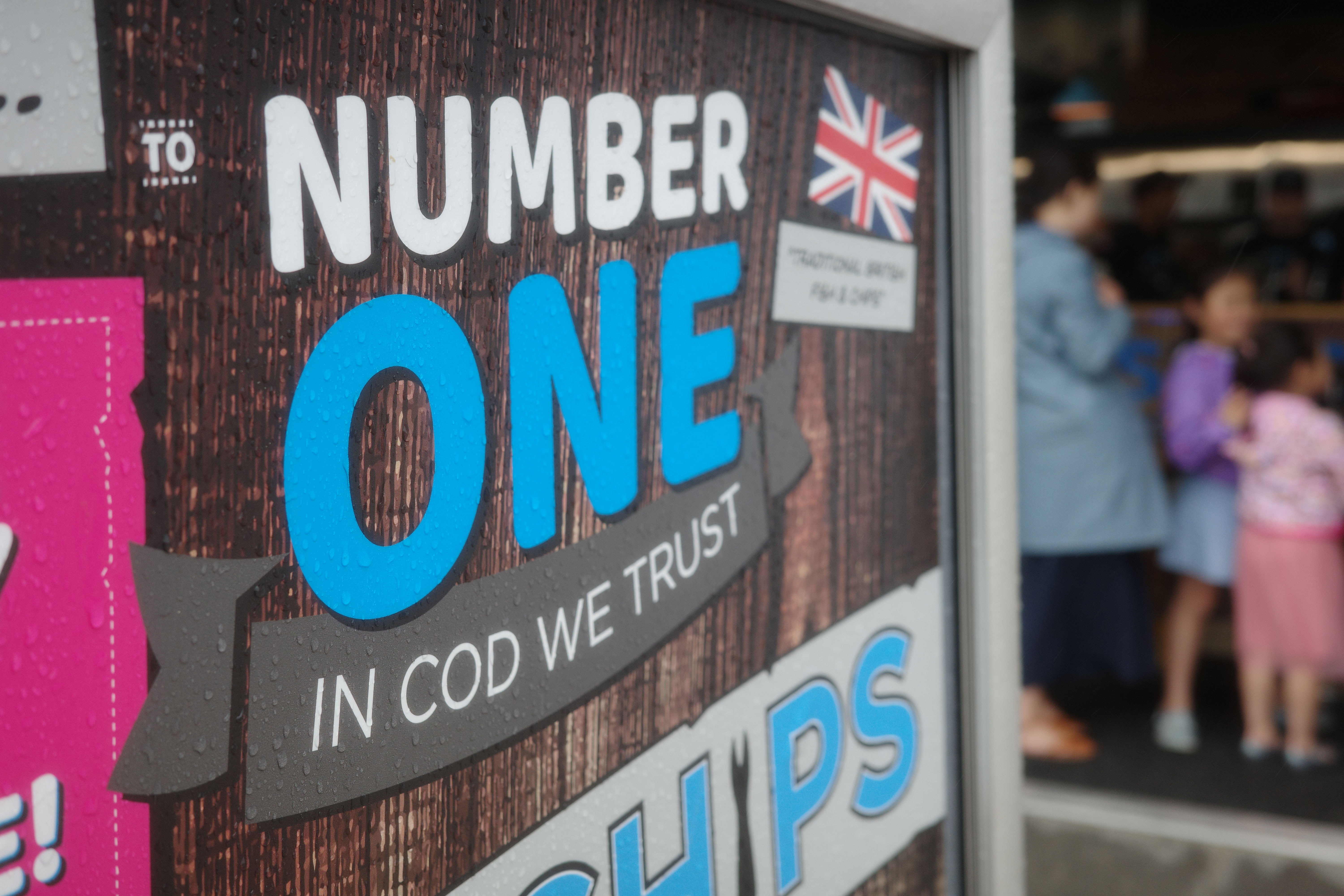
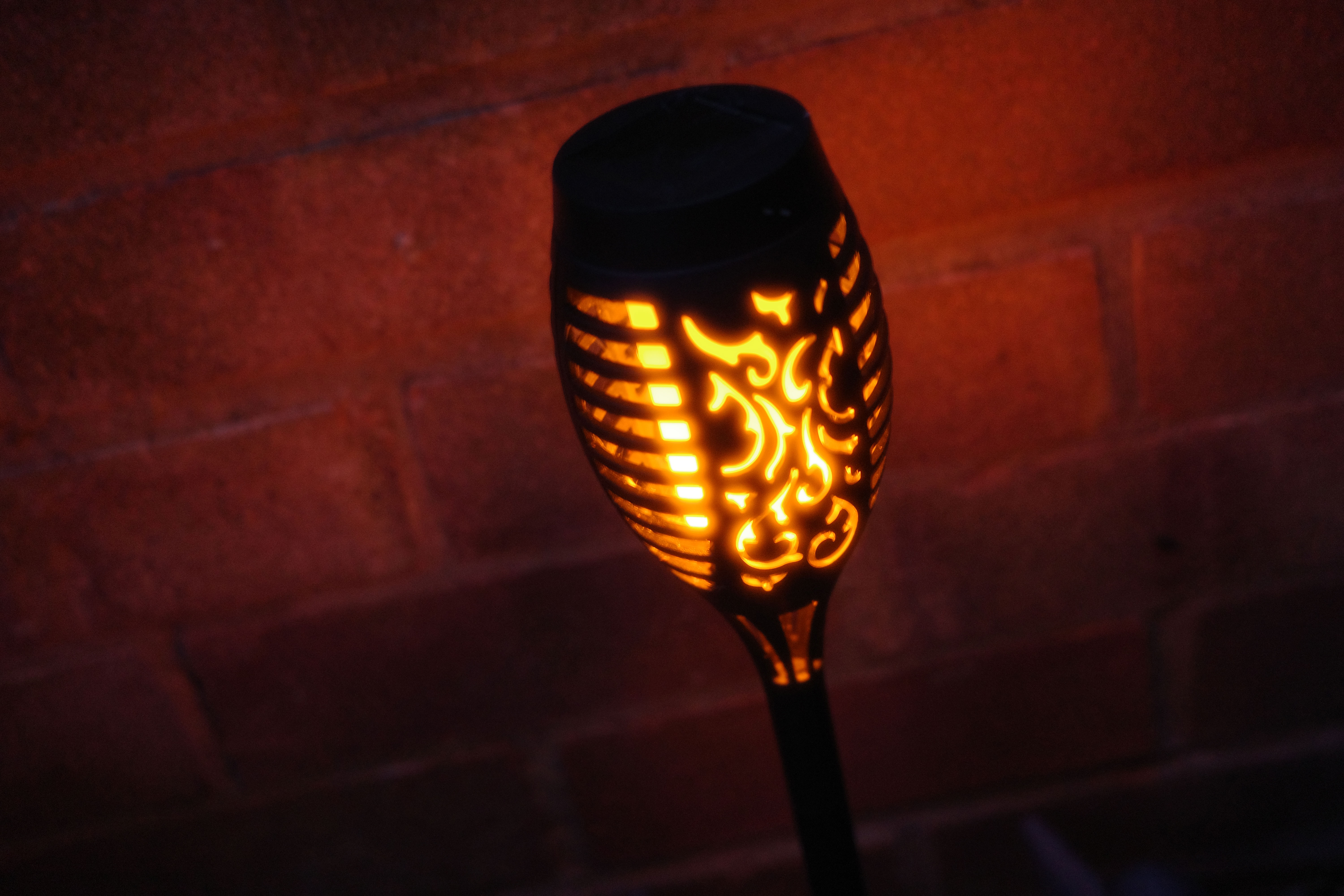
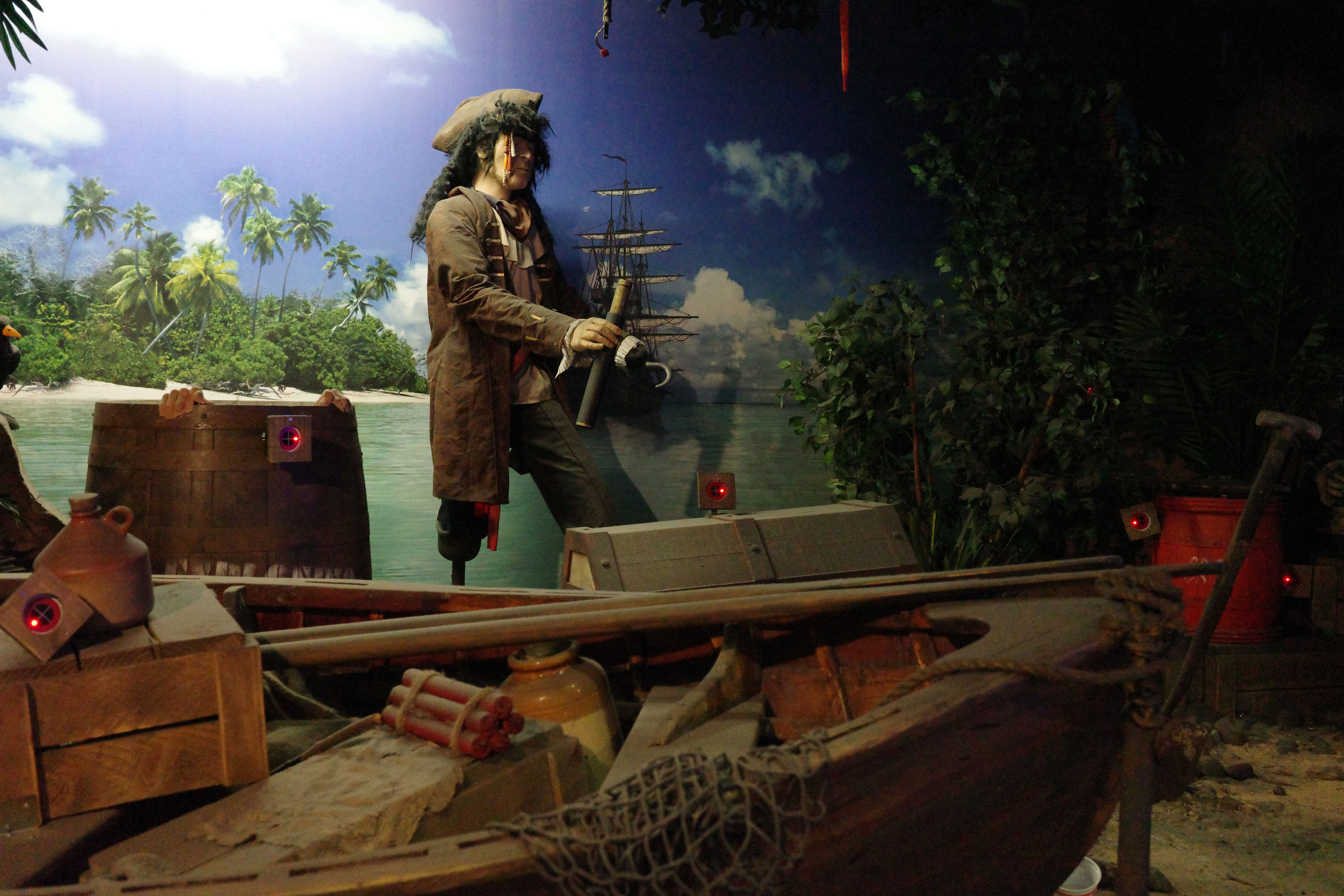
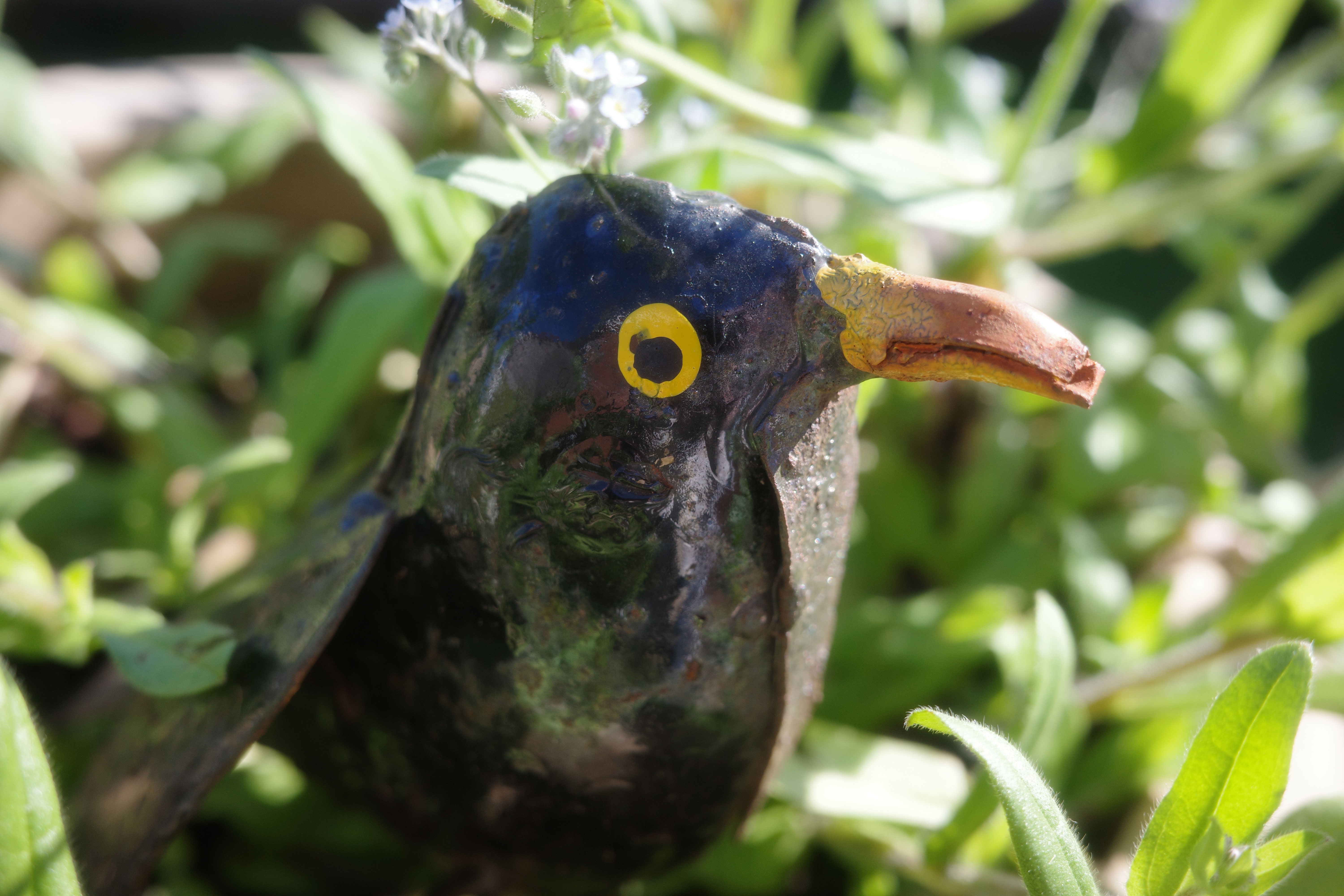
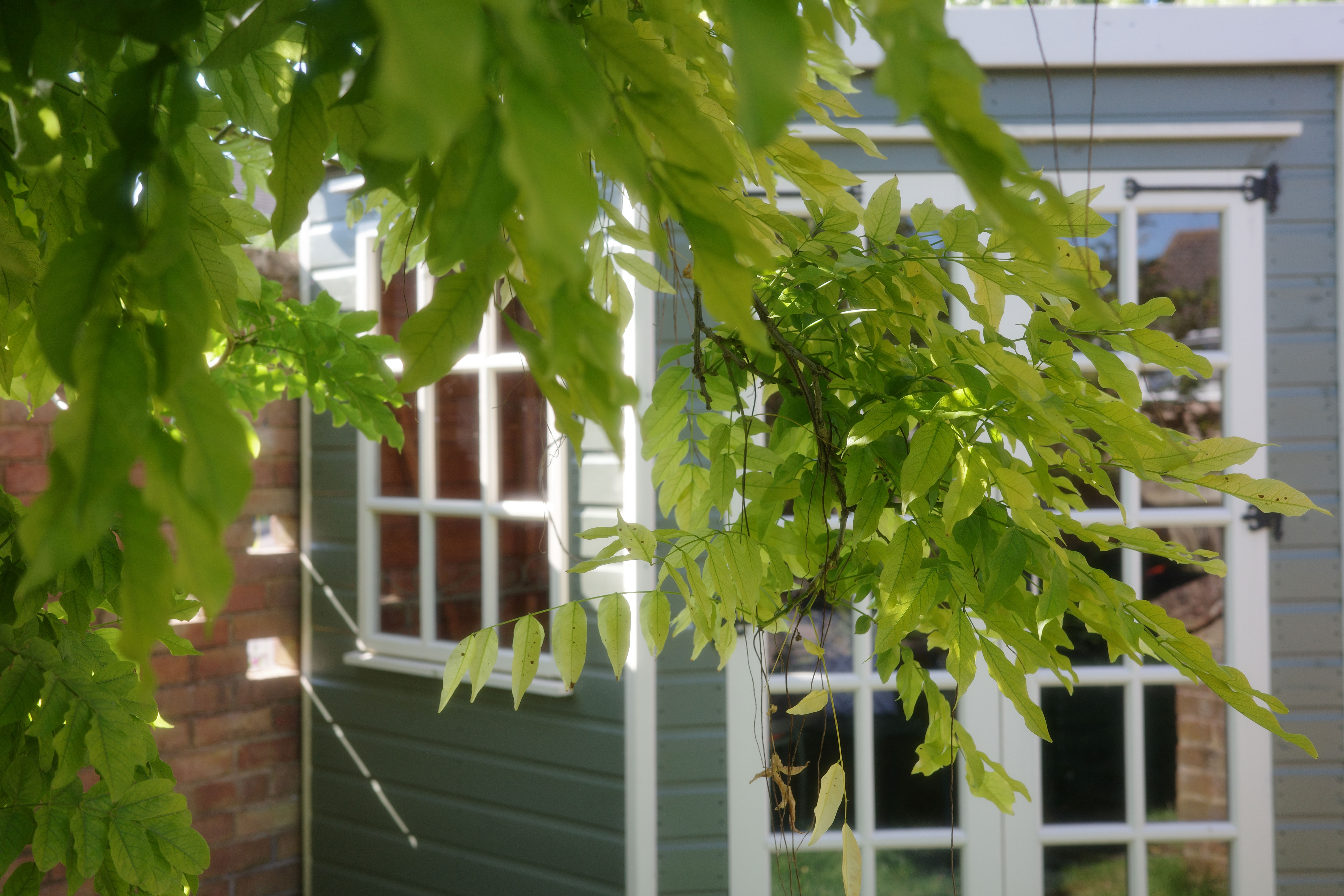
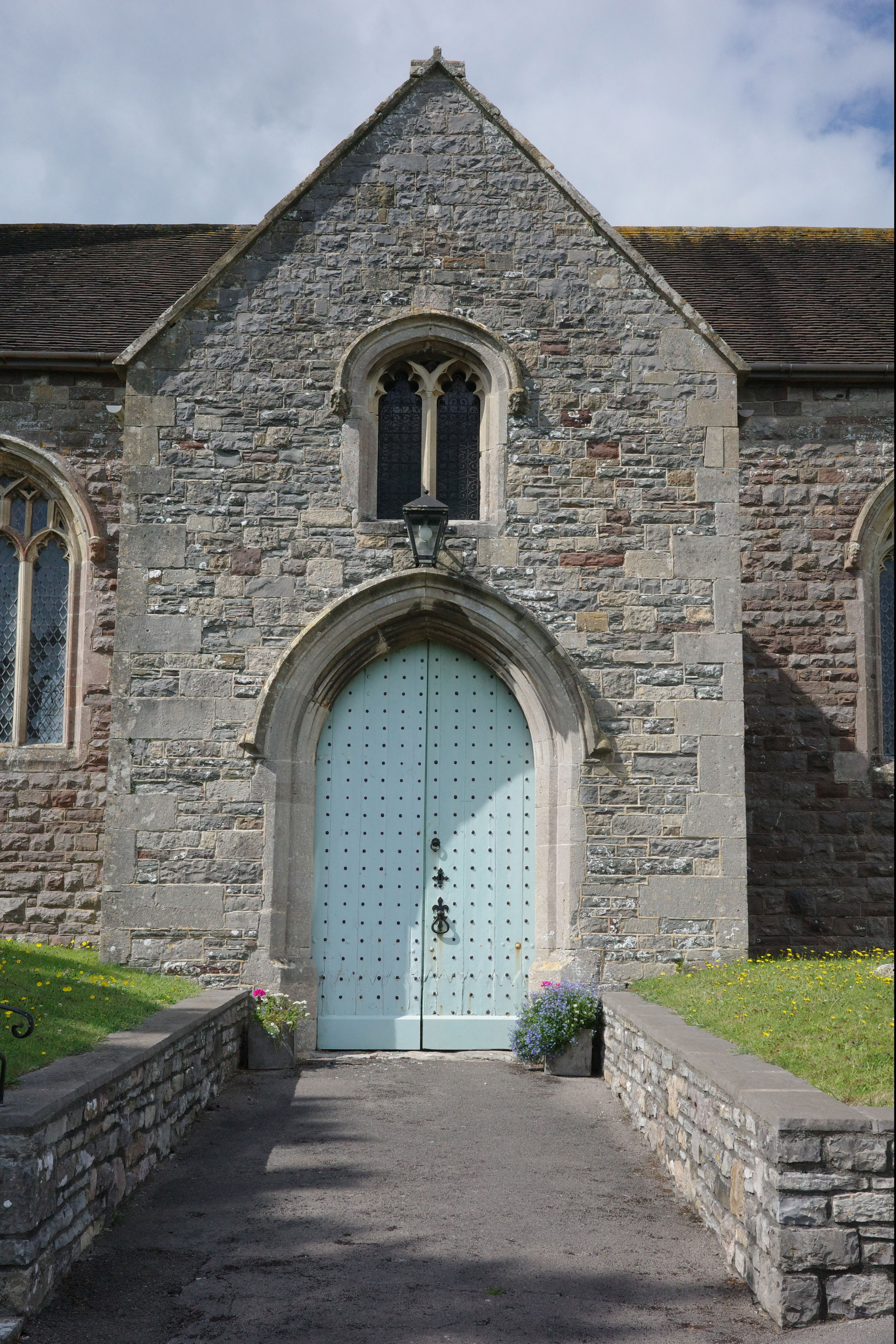
Ricoh GR IIIx HDF: Verdict
If you must have a camera small enough to fit in your pocket, then the Ricoh GR III is the only camera that fits the bill. The GR IIIx reviewed here has a 40mm equivalent lens but is the same size as the regular 28mm equivalent GR III, and the substitution of an HDF filter for the regular ND filter makes it an interesting creative alternative.
It’s pretty amazing that Ricoh should have been able to cram so many effective hands-on controls and dials to this camera without making it feel crowded. It’s harder to enjoy the overall handling experience, though, with grip that looks the part but is far less effective on a camera scaled down this far. It’s a small camera because it has to be, but if you can accept carrying a camera in a bigger jacket pocket or a bag, then there are many other cameras only a little larger which will provide a much nicer handling experience – with interchangeable lenses, too.
The lack of an EVF and the fixed rear screen does make the GR IIIx HDF hard work at times, especially outdoors in bright light, where you have to manually increase the screen brightness, and the 200-shot battery life can be limiting for longer outings and expeditions.
The electrically-driven lens focuses quickly enough, probably and there’s always the ‘snap’ focus mode, though this itself is not quite instantaneous. The lens quality is first rate, though, so no complaints there.
The GR III is a unique camera with a strong following, but by modern standards it’s limited and distinctly awkward to use. There are no other APS-C cameras this small, but that compactness comes at a cost.
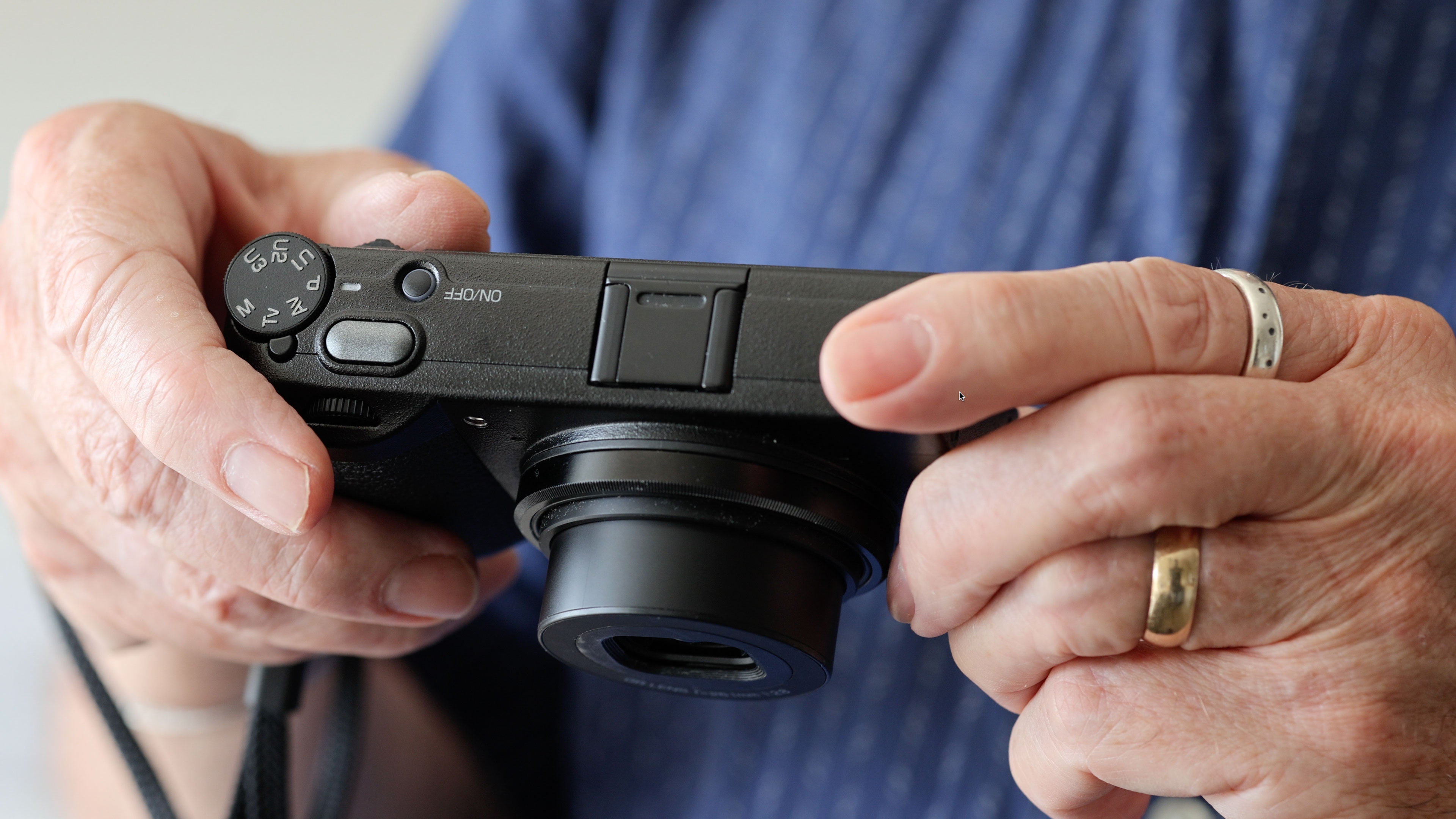
✅ Buy it...
- If you need a pocket-sized camera capable of delivery ‘proper’ camera quality
- If you like a the discipline and simplicity of a single focal length
- You need a 'second' camera just for outings and backup
🚫 Don't buy it...
- If you want a viewfinder – unless you don’t mind an expensive clip-on accessory
- If you want to shoot 4K video. The GR IIIx HDF is limited to full HD capture
- If you want a range of focal lengths – there are adaptors but they are neither compact nor cheap







